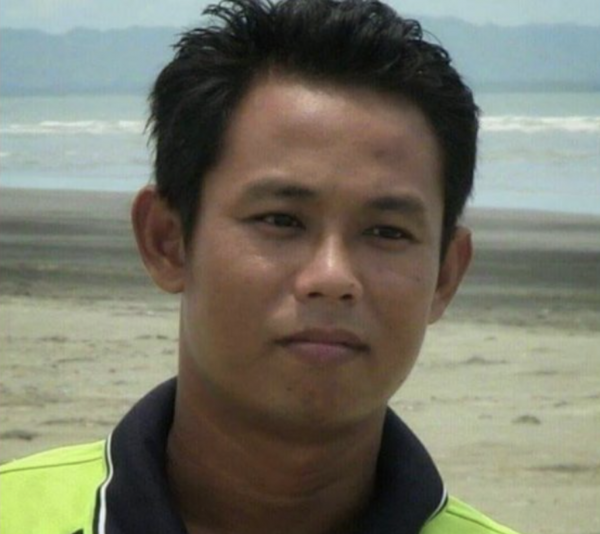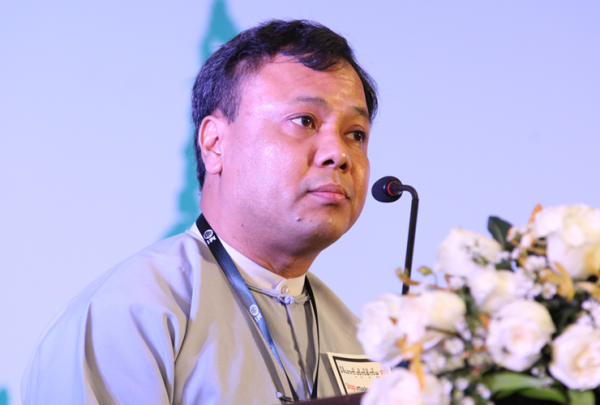The Myanmar junta’s crackdown on independent media and civil society has been intensifying again in recent weeks. On December 14, freelance photojournalist Ko Soe Naing died in military custody after being arrested earlier this month while covering a pro-democracy protest in the country’s capital Yangon. He became the first Burmese journalist known to have died in custody since the military coup last February.
The IPI global network calls for a thorough investigation into Ko Soe Naing’s death and demands the immediate release of all jailed journalists in Myanmar.
“The reporters in Myanmar have to pay with their life to get a photo or news report”, Soe Myint, the managing director and editor-in-chief of Mizzima Media Group, told IPI. “It also shows again that the military junta is ruthless and brutal and ready to commit any extrajudicial killing and torture against journalists and activists in its attempts to shut down free the flow of information and freedom of expression. The international community should not be confused that the Myanmar military is a terrorist regime.”
The silent strike
People all over the country protested the junta’s regime by closing businesses and staying off the streets for six hours on December 10 during the “silent strike”, which was one of the biggest demonstrations in several months. Political prisoners in Insein prison joined the strike as well, for which they were brutally beaten by prison guards.
Ko Soe Naing and a colleague were taking photos in downtown Yangon during the protest when they were detained. Ko Soe Naing was transferred to a military interrogation centre in Yangon’s Eastern Botahtaung Township, and his family was informed of his death on Tuesday morning. Ko Soe Naing’s colleague’s current situation and whereabouts are unknown.
Constant risk of arrest
Many detained activists and members of Aung San Suu Kyi’s National League for Democracy party have died in detention before Ko Soe Naing, and in several cases the bodies showed marks of violence and torture, according to news reports.
Despite the risks, Burmese journalists are doing their best to keep working, even though many of them have had to go under the radar to avoid detention. “Some detained journalists have been released, but almost all of them had to go into hiding or leave their homes, which are known to the military junta”, Soe Myint said. “They could be rearrested at any time.”
As of December 15, a reported 42 Burmese journalists remain detained. Twelve journalists in total have been convicted, of whom five have been released, including U.S. journalist Danny Fenster, editor of Frontier Myanmar. He was convicted on November 12 and sentenced to 11 years of imprisonment for treason and terrorism, but deported to the U.S. soon after.
“Many people will stay in prison and face harsh sentences”, Soe Myint said, explaining the hostage strategy of the junta. “Political prisoners are used as leverage when the regime negotiates with foreign countries and international organizations. Fenster was one of the hostages they used to get what they want from the United States. The regime has done this many times in the past.”
Month of escalating crackdown
Unfortunately, Ko Soe Naing’s detention and death was only one of the many attacks on Burmese journalists in recent weeks.
Ma Hmu Yadanar Khet Moh Moh Tun, a video journalist with the Myanmar Pressphoto Agency, and photojournalist Ko Kaung Sett Lin were covering a flash mob protest in Yangon when they were severely injured and then detained after military forces drove into a crowd of protesters with a pickup truck earlier this month. At least five people died in the violent attack.
A junta court sentenced three Kanbawza Tai News journalists to three years’ imprisonment for allegedly spreading false information. Editor Nann Nann Tai (together with her brother, Ko Sai Sithu), reporter Nan Win Yi, and publisher Ko Tin Aung Kyaw have been detained since March 24.
Democratic Voice of Burma journalist Aung San Lin was violently arrested on December 11 from his home in the village of Pin Zin, in the north-western region of Sagiang. Right before his arrest Aung San Lin had published an article alleging that military forces burned down the homes of three supporters of the NLD.
The repression of media is part of the junta’s wider, atrocious crackdown on dissent. Violent clashes between the military and the Karen National Liberation Army (KNLA) broke out in Lay Kay Kaw Town after soldiers raided the village and arrested a number of people, including an elected NLD member of parliament. According to media reports, junta soldiers also killed and burned five people in a village in Sagaing after two days of intense fighting with the local People’s Defence Force (PDF).
Myanmar’s military leader Min Aung Hlaing was accused of committing crimes against humanity at the International Criminal Court (ICC) on December 10. The Myanmar Accountability Project (MAP) urged The Hague tribunal to open an investigation into the junta’s brutal actions.
The future
Amid the horrendous violence and constant risk of detention, media face other pressures, too. Financial sustainability and the business model of media have changed completely after the coup, and news outlets are relying on foreign funding instead of advertisement revenues and sales. According to Soe Myint, Mizzima Media Group is currently in the process of stabilizing its financial resources.
The military junta has promised multi-party elections by August 2023, but observers say they are most likely not going to be democratic.
“The main plan of the regime is to hold elections to make sure that they are elected constitutionally and legitimate their power”, Soe Myint said. “The regime will make sure that they will have their commander-in-chief as a president and power in the government.”
He laid out three possible scenarios that the Burmese media could be facing in the near future. “By 2023 the regime could be defeated, and media would be able to operate inside the country again. We would still continue our current tactic of one foot in and one foot out, wait and see developments even after the regime falls”, Soe Myint explained, referring to the fact that Burmese media outlets are currently operating underground inside the country and from exile in neighbouring countries. “The second option is that the regime stays in power and wins the elections, continues with their iron rule. In this case we would definitely continue doing what we are doing now.”
The third option would be a combination of these two scenarios. “The regime might stay in power in the urban areas, but large territories would be managed by the resistance forces. In this case we could expand and strengthen our reporting on the ground in these rural regions. We might have challenges with telecommunications, but there is room to expand.”



